Here are the Best Tea Herbs to Make a Tea Herb Garden. Grow them today for a healthy refreshing beverage for your family!
A refreshing cup of tea is all you need after a hard day’s work, and what could be more beneficial than having healthy ingredients in it! Here are the Best Tea Herbs to Make a Tea Herb Garden for good health!
Have a look at the best herbs for women here
Best Tea Herbs to Make a Tea Herb Garden
1. Lavender
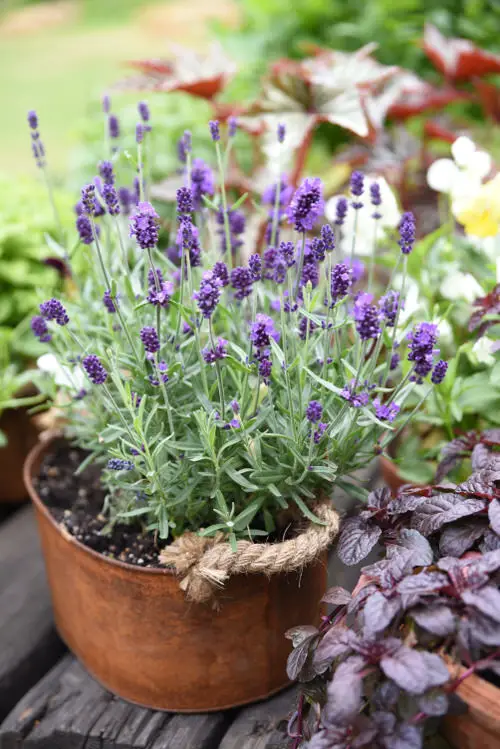
View this post on Instagram
Botanical Name: Lavandula
The brewed purple buds of lavender in hot water calm the mind, help you sleep better, and improve skin texture.
Here’s all you need to know about growing Lavender
2. Lemon Verbena
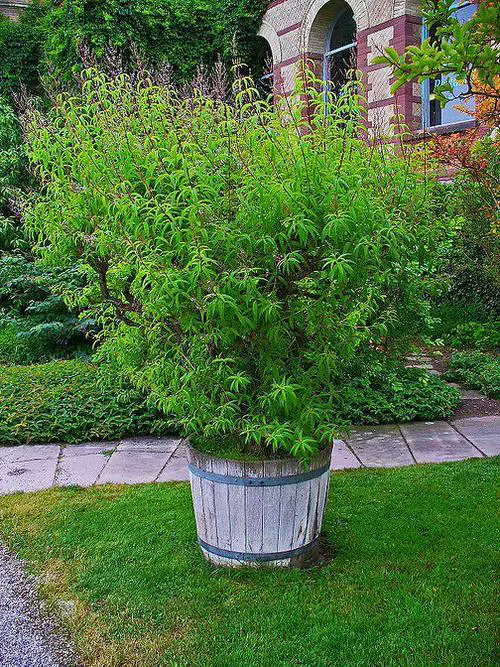
View this post on Instagram
Botanical Name: Aloysia citrodora
Put 3 lemon verbena leaves in 4 cups of water and boil for 15 minutes. Serve hot or iced. This tea heals joint pain, insomnia, cold, fever, and digestive issues.
Growing Tips: Use well-draining, fertile soil and a container with drainage holes to grow lemon verbena indoors.
3. Mint

View this post on Instagram
Botanical Name: Mentha
Mint is popular among herbal tea lovers. It’s also one of the easiest plants to grow. Mint tea fights digestive disorders, abdominal pain, and stomach cramps.
Check out our article on growing mint here
4. Lemon Balm
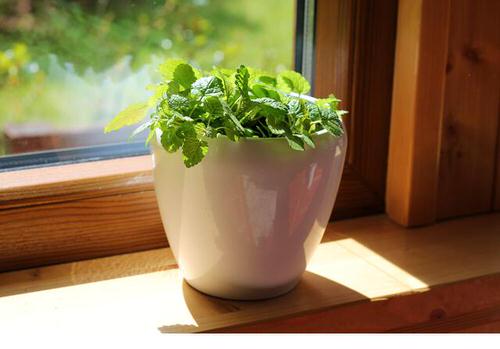
View this post on Instagram
Botanical Name: Melissa officinalis
This herb has a distinct lemon flavor and goes well in herbal teas. It helps treat headaches, and relieves tension and digestive disorders.
Growing Tips: Lemon balm grows well in dry soil and partial shade. It spreads vigorously if planted in garden beds, so grow it in a container.
5. Ginger
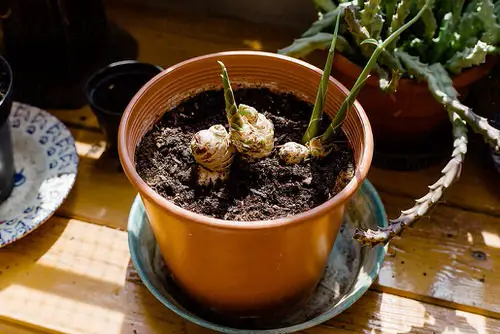
View this post on Instagram
Botanical Name: Zingiber officinale
Ginger roots and leaves are used to make tea. It has antioxidant and antibacterial properties that cure diseases like cold, flu, nausea, and improve digestion and appetite.
Here’s all you need to know about growing Ginger
6. Thyme

View this post on Instagram
Botanical Name: Thymus vulgaris
Thyme is an effective herbal tea ingredient that relieves stomach problems and sore throat. The leaves are used in making tea; you can add flowers as well.
Check out our article on growing thyme here
7. Chamomile

View this post on Instagram
Botanical Name: Matricaria chamomilla
This medicinal tea herb is traditionally used to induce sleep. The tea comprises small white and yellow flowers rather than leaves. Roman chamomile offers strong flavored tea.
Here’s all you need to know about growing Chamomile
8. Jasmine
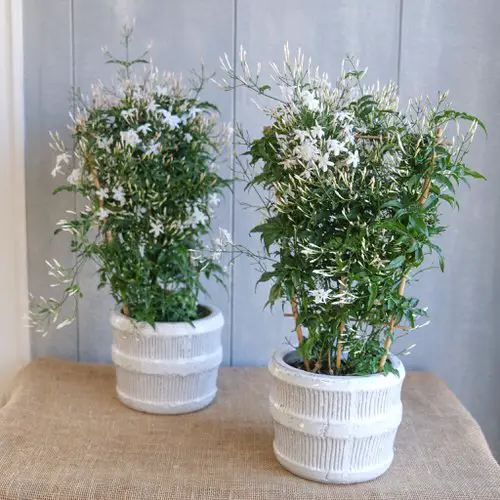
View this post on Instagram
Botanical Name: Jasminum
Jasmine flowers are brewed in hot water for a calming aromatic tea. You can dry and mix them with green tea as well, or steep the flowers alone. It has antiseptic properties and is helpful in muscle spasms.
Check out our article on the best types of Jasmine here
9. Stevia

View this post on Instagram
Botanical Name: Stevia rebaudiana
The sweet Stevia leaves can be steeped to make tea. This natural sweetener is used in place of sugar and is good for diabetics.
Growing Tips: Stevia grows best in USDA Zones 9 to 11. Still, you can grow it in colder zones in a pot so it can be brought inside when winter comes.
10. Marjoram
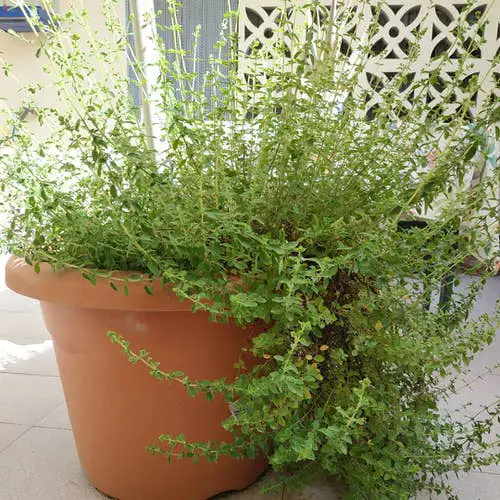
View this post on Instagram
Botanical Name: Origanum majorana
This culinary herb has a fruity and sour flavor with a hint of mint. Marjoram tea cures various digestion and stomach problems, including poor appetite, liver disease, gallstones, intestinal gas, and stomach cramps.
Here’s all you need to know about growing Marjoram
11. Cilantro
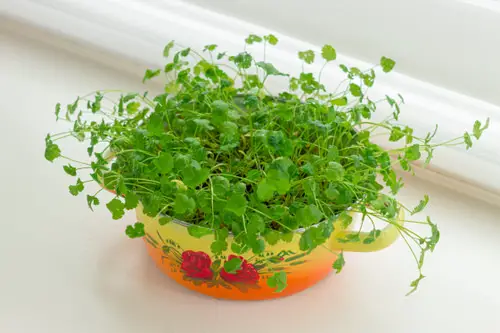
View this post on Instagram
Botanical Name: Coriandrum sativum
Commonly used for cooking, cilantro is also suitable for making tea. Mix honey in it to soothe acidity and constipation. It also clears toxins from the body and prevents indigestion.
Check out our article on growing cilantro here
12. Rosemary

View this post on Instagram
Botanical Name: Salvia rosmarinus
Rosemary tea improves digestion, promotes cognitive function, and acts as an antioxidant, protecting the body from heart disease and cancer.
Learn how to grow rosemary in pots here
13. Fennel
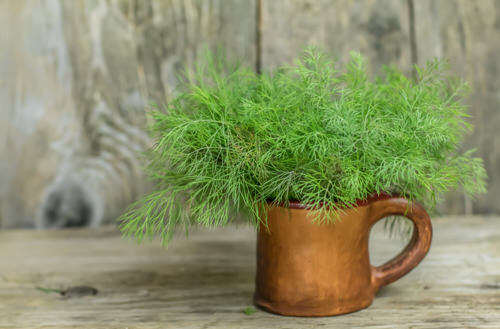
View this post on Instagram
Botanical Name: Foeniculum vulgare
Brew fennel seeds in hot water for a refreshing tea. It is beneficial for digestive disorders like irritable bowel syndrome, bloating, and flatulence.
Check out our article on growing fennel here
14. St. John’s wort
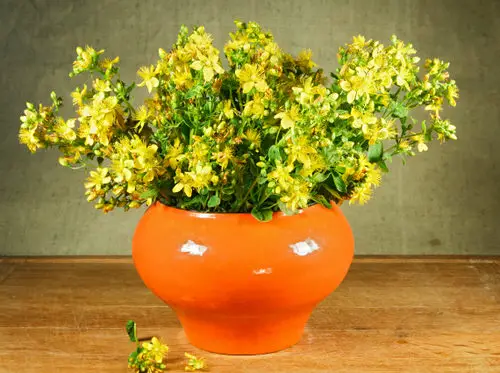
View this post on Instagram
Botanical Name: Hypericum perforatum
This herbal tea is an effective remedy against nervous disorders, such as insomnia, depression, and anxiety. Do make sure that you are not consuming more than 2 cups a day.
Learn how to grow St. John’s wort here
15. Sage

View this post on Instagram
Botanical Name: Salvia officinalis
Take 1 tablespoon of fresh or dried sage leaves and steep them for 3-5 minutes in boiling water—strain and mix honey for taste. The antiseptic tonic helps in treating mouth ulcers and sore throat.
Check out our article on growing sage here
16. Viola
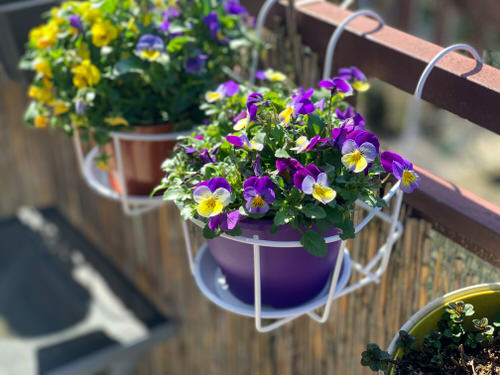
View this post on Instagram
Botanical Name: Viola tricolor
Viola tricolor is known for its medicinal properties. It contains flavonoids, saponins, anthocyanins, and carotenoids that help fight various skin diseases, allergies, and sore throat. You can use the whole plant to make tea.
Growing Tips: Viola tricolor grows in partial shade in slightly acidic to neutral soil.
17. Basil

View this post on Instagram
Botanical Name: Ocimum basilicum
Basil, especially holy basil or tulsi, is best for making tea. This relaxing tea has anti-inflammatory and antioxidant properties that help handle anxiety and stress. It is one of the best tea herbs to make a tea herb garden!
Here are the best types of basil you can grow
18. Catnip

View this post on Instagram
Botanical Name: Nepeta cataria
Mildly sedative and calming, catnip tea is an excellent treat after an exhausting day. This herbal tea is helpful in cough, asthma, gas, and nervousness.
Check out our article on growing Catnip here
19. Lemon Grass
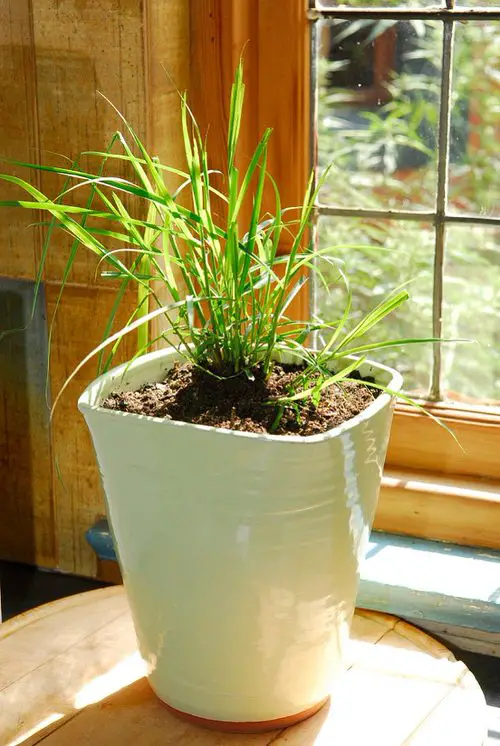
View this post on Instagram
Botanical Name: Cymbopogon
Cut the stalks into 1-2 inches pieces and brew them in hot water. This tea protects against heart diseases by reducing inflammation in blood vessels and arteries.
Learn how to grow Lemon Grass here
20. Pineapple Sage
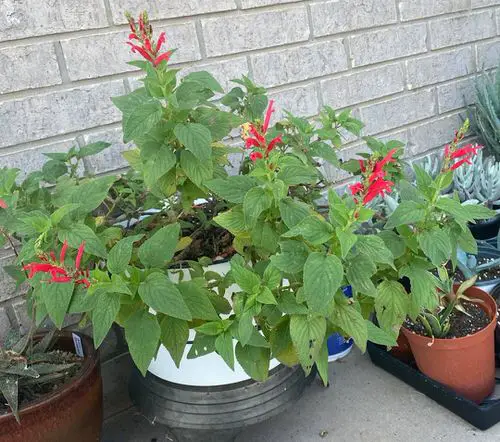
View this post on Instagram
Botanical Name: Salvia elegans
Pineapple Sage makes for a great tea because of its mild pineapple-like taste with a hint of sage. It is also rich in antioxidants and is also suitable for health.
Growing Tips: Give it a lot of sunlight and grow it in small pots.
21. Laurel Bay Leaves

View this post on Instagram
Botanical Name: Laurus nobilis
Laurel Bay tea is an excellent source of vitamin C. It has antibacterial properties that boost the immune system. To prepare tea, simply boil some leaves in water.
Learn about growing laurel bay leaves here
Points to Consider
- There are several herbs and flowers that are suitable for making teas. Your choice depends on which flavor you like most and what will grow best for you according to the climate and space you have.
- Either use these herbs fresh or air dry them and preserve them to make healthy and aromatic herbal teas.
- Don’t remove too many leaves at once; you might kill the plant. Cultivate more plants of all or any herb that you frequently use.
- Don’t use chemical pesticides and insect repellents on your tea herbs.



Hi
I found the your information is useful
Thanks for the information you forgot the most important one I use extensively Parsley, Parsley has all sorts of medicinal qualities, the most important is helping keep joints from arthritis, the other is Hyssop, Salvia I like pineapple due to its sweetness, it is a stimulant so be careful how lake you take it. Also forgot valarian for sleep.Don’t grow jasamine due to its tropical qualities would need to bring in and out so not practical were we live up N. in Ohio.
Thank you for the useful information..just getting started on making my medicinal beds and returning to nature tired of pills…so this information is gold
I have a speariment bush. How do I know what leaves to take off the purple or green. How often do I water it. It is out side. How do I make the team. Thanks so much.
Dear Sirs,
We are one large herb tea company located in Tibet plateau above 4000 meters sea level.,our herb tea call Rhubarb tea which extract from wild Tibet rhubarb .The function of Rhubarb tea are treat constipation and haemorrhoids.
We exported Rhubarb tea to all the world,if you are interested in our tea,please contact us,we’ll post samples to you.
Best regards
Wang Haiwen
I would most deffinantly like a sample of your tea wang haiwen.
I think they all taste good but I have never tasted stevia or lavender tea.
Wang Haiwen,
I would love a sample of your tea please!
Dear Sir,
how can I make a best Masala tea blend
I just made some lemon balm and lemon thyme tea. It is delicious. The tea herbs I have right now are spearmint, peppermint, chocolate mint, sage, lemon balm, lemon thyme, parsley, and lavender. I’m really excited to mix different herbs together.
I have two big sage plants that I use for tea. I found your article very interesting and will expand my herb garden next spring with some of your suggestions. I have grown cilantro in past years but was unaware it could be used for tea. Thank you for so much information.
ginger tea is the best in the morning, try it. :)
It’s a spreading perennial happy in many soil types but particularly loves moist, shaded or semi-shaded conditions. Like all mints, peppermint is rather rampant in the garden, so it’s best to grow it in a pot. Try growing a collection of the many different types available. The leaves are small, crinkled and slightly pointy at the end with a purplish tinge. If you crush them, the strong essential oils are released with the unmistakable invigorating smell of peppermint.
Hello, Thank you sooooooooo much for your help now that I have my herbs I can start my Tea garden (a garden with tea ingredients) Thanks!!! 🍃
Is this called an infusion?
Some are in my garden, definitely I will have alternate tea sessions depending on my mood. For now I like lavender for my calming tea.